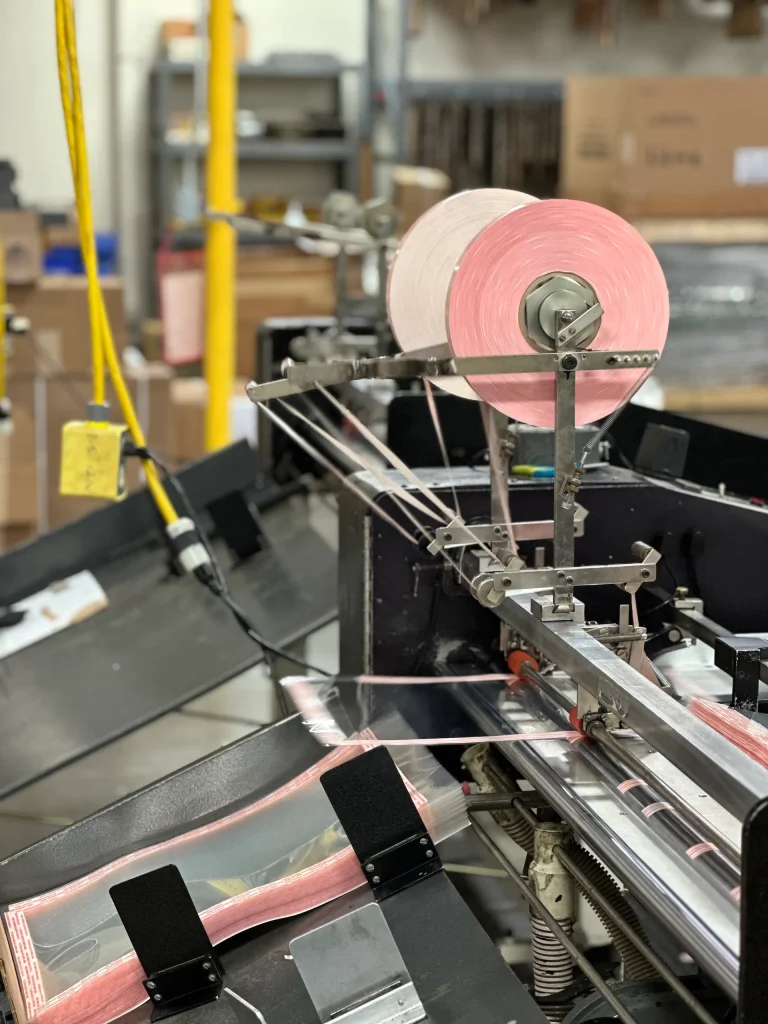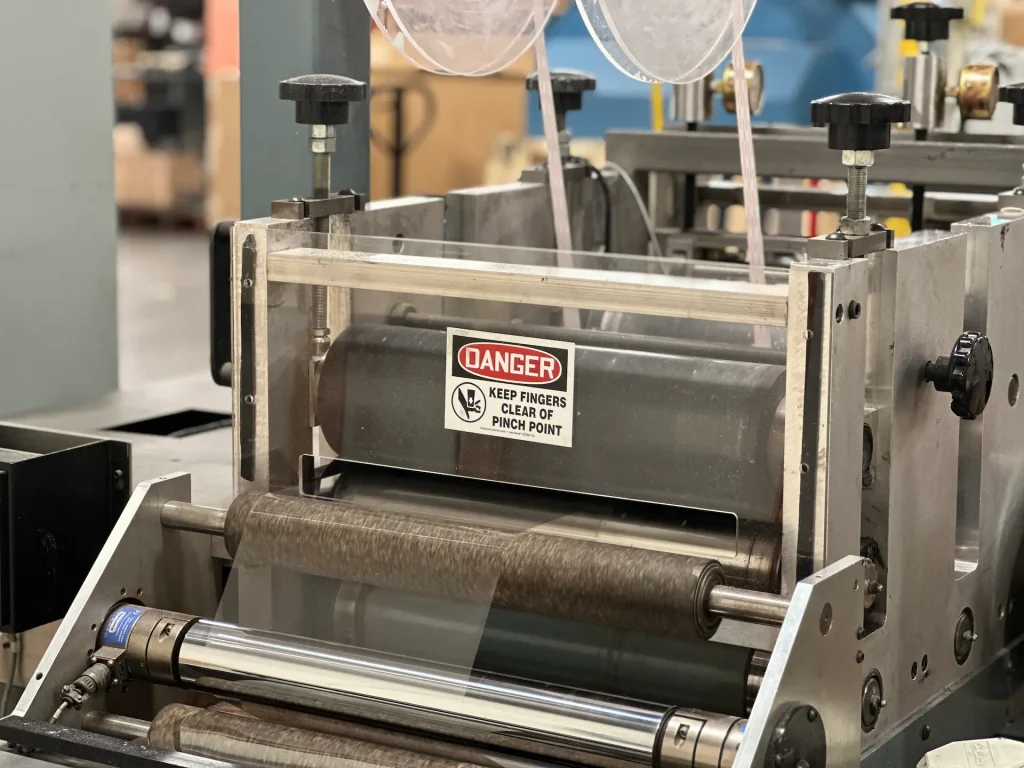Colvin-Friedman delivers the expertise and quality control required for complex geometries in components that help American warfighters. When it comes to die cutting for the military and defense industry, we pride ourselves on our ability to cut a variety of materials using best practices developed over 75 years of mission-critical production for a variety of industries requiring tight tolerances and zero mistakes.

If you are looking to partner with a U.S.-based and owned company that can produce components from silicone, composites, foams, films, and many more, fill out the short quote form. You can also call our Vice President, Josh Rodman, at (707) 769-4488 for immediate attention to any questions you may have.
Or call Josh at (707) 769-4488
Paper die-cutting only works as an outsourced process if the supplier and the company are in complete alignment through all steps. Colvin Friedman is in constant contact with each customer through the following four pre-cut stages of the process:
Vehicle & Aircraft
Communications Equipment
Protective Equipment
Optical Systems
Portable Equipment
– EMI/RFI shielding
– Gaskets and seals
– Thermal insulation
– Vibration dampening
– Weather sealing
– Display protection
– Impact absorption
– EMI shields
– Impact padding
– Ballistic protection components
– Equipment cushioning
– Helmet components
– Light shields
– Optical protection
– Equipment seals
– Display covers
– Equipment padding
– Protective packaging
– Transport cushioning
– Shock mounts
1. Conductive elastomers
2. High-temp silicones
3. Composite materials
4. MIL-spec foams
1. Conductive materials
2. Weather-resistant elastomers
3. Optical grade materials
4. Protective foams
1. Impact-resistant foams
2. Ballistic materials
3. High-density foams
4. Composite materials
1. Light-blocking materials
2. Optical-grade films
3. Sealing materials
4. Protective films
1. Closed-cell foams
2. Shock-absorbing materials
3. Durable elastomers
4. Protective foams
– MIL-DTL specifications
– Environmental resistance
– Temperature tolerance
– Chemical resistance
– EMI shielding effectiveness
– Environmental sealing
– Impact resistance
– UV stability
– Impact protection specs
– Durability requirements
– Environmental stability
– Chemical resistance
– Light transmission
– Environmental sealing
– Optical clarity
– Chemical resistance
– Shock protection
– Environmental stability
– Durability
– Weight requirements
Or call Josh at (707) 769-4488
With a combination of decades of experience and skilled staff, Colvin-Friedman has established a set of best practices that enable us to deliver mil-spec components on tight timeframes without sacrificing quality. Below are some of the main elements of our processes, divided by material type.
Conduct Pre- and Post-Cut Electrical Conductivity and Shielding Tests
Use Deburred Edges in Metal Components
Apply Controlled Atmosphere Processing to Prevent Contamination
Confirms that cutting does not compromise conductivity or shielding properties, ensuring consistent EMI/RFI protection critical in defense applications.
Minimizes potential electrical interference or short-circuit risks from rough edges, improving reliability in high-sensitivity environments.
Ensures material purity and avoids introducing contaminants that could degrade shielding performance, especially when metal-free zones are required.
Establish Advanced Cutting Profiles Based on Fiber Orientation and Thickness
Schedule Routine Tool Inspection and Blade Recalibration
Implement Dust and Debris Extraction Systems Specific to Composites
Reduces material stress, avoiding fiber damage and maintaining critical strength properties required in high-stress defense scenarios.
Prevents cut inconsistency and edge fraying, ensuring each composite part meets structural specifications for repeated stress exposure.
Reduces risks of airborne fibers contaminating other processes, maintaining clean working conditions for precise composite handling.
Conduct Pre-Processing Density and Hardness Verification
Implement Moisture Control in Storage and Processing Environments
Ensures raw material properties align with shock absorption and durability standards required for military-grade performance.
Maintains consistent material behavior, preventing variability in compression set resistance and long-term cushioning.
Utilize Anti-Static Measures During Processing
Regularly Monitor Optical Transmission and Reflectivity Post-Cutting
Reduces the risk of static-induced defects on display surfaces, preserving material quality for high-precision viewing.
Ensures materials maintain required transparency and light control properties, critical for accurate display functionality.
Implement Automated Compression and Recovery Testing per Batch
Use Edge Sealing Techniques for Material Longevity
Employ Detailed Dimensional Verification for Complex Shapes
Confirms that each batch meets the durability and sealing performance standards needed in harsh environments.
Prevents edge fraying, enhancing the durability and reliability of seals under repeated thermal cycling and chemical exposure.
Ensures precise fit and function, critical to maintaining airtight seals in variable environments.
Implement Directional Cutting Based on Fiber Layup
Use Layered Quality Control Inspections for Thickness and Density
Maintain Full Material Traceability with RFID or Barcode Systems
Preserves the structural integrity and impact resistance of the material, critical for ballistic protection applications.
Confirms consistency across multiple layers, ensuring reliable protection and compliance with safety standards.
Facilitates batch tracking and quality assurance, essential for defense-grade accountability.
Of course, these are not the only concerns that any company has when choosing the right die-cutting company to help prepare their medical products. Other concerns are important to address before deciding on a vendor.
Verify Consistent Thermal Conductivity Across Cut Sections
Integrate Precision Cutting for Tight Tolerances
Ensures each segment meets thermal performance specifications, critical for effective heat dissipation.
Maintains surface integrity, essential for optimal heat transfer and fit in tightly packed assemblies.
Or call Josh at (707) 769-4488
When it comes to deciding upon a supplier, the actual numbers matter. Colvin-Friedman proudly publishes its production numbers and tolerances in public because we believe that our commitment to quality and results will speak for themselves. Below are common requirements in the industry and our ability to meet or exceed them.
Technical Precision
Materials Processing
Quality Systems
Performance Testing
– MIL-spec tolerances
– Complex geometries
– Critical dimensions
– Repeatable accuracy
– MIL-spec materials (metals, polymers, composites)
– Specialty composites
– Critical performance materials
– Multi-layer assemblies
– Material traceability
– Detailed process documentation
– First article inspection (FAI)
– PPAP (Production Part Approval Process) capability
– Environmental testing
– Performance validation of parts
– Certification of materials to military standards
– Specification compliance
– ±0.010″ tolerance level for precise cutting
– Proficient in intricate and complex shape-cutting
– High precision with automated statistical process control
– Extensive experience with MIL-spec and specialty materials
– Multi-material die-cutting expertise
– Composite and layered material handling capabilities
– Complete traceability from raw material to finished part
– Robust process documentation
– First article inspection and PPAP-compliant processes
– In-house environmental testing
– Full material validation and performance documentation
– Compliance with required material and performance standards

At Colvin-Friedman, we know that it is mission-critical to have components ready and to spec in order to fulfill defense contracts. It is why we are dedicated to on-time delivery, integration with inventory management systems and production of components that meet mil-spec standards for dimension compliance and more.
If you are looking for a die-cutting company that can become a partner on projects as small as pilots and as large-scale as full-branch provisioning, fill out the short form for a complimentary quote on your next project. If you have any questions, reach out to our Vice President, Josh Rodman at (707) 769-4488 today.
Or call Josh at (707) 769-4488